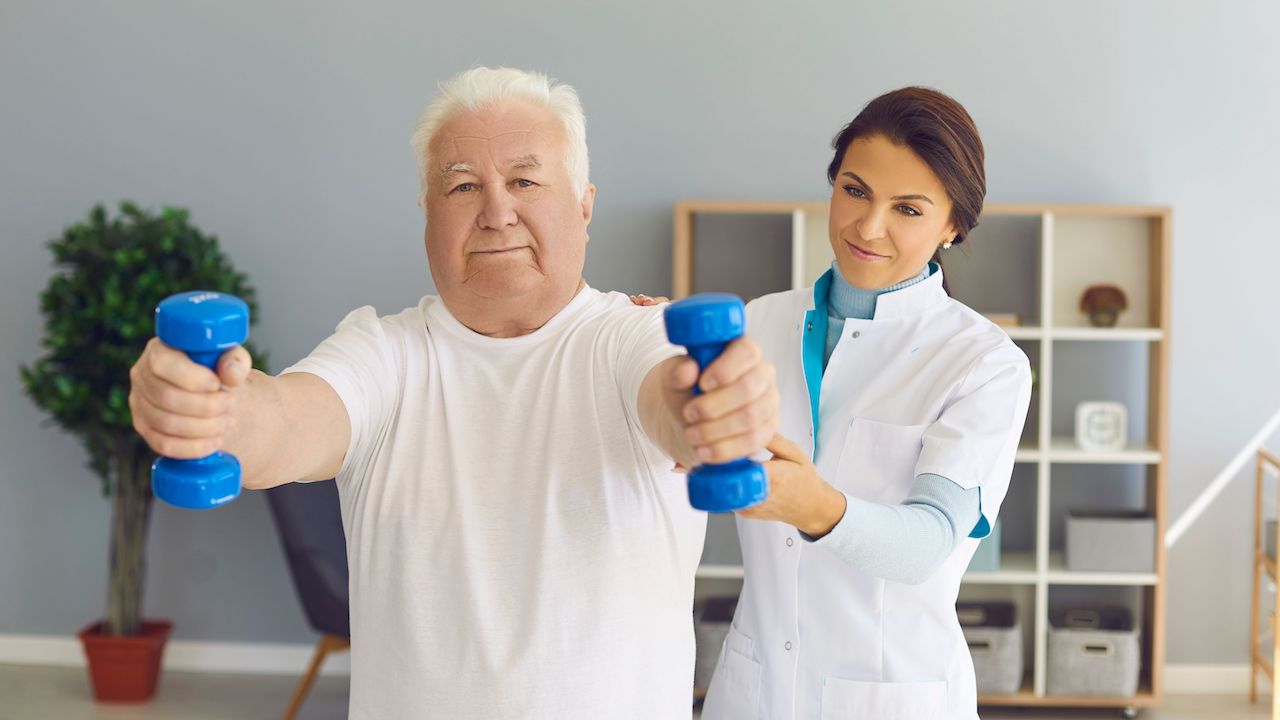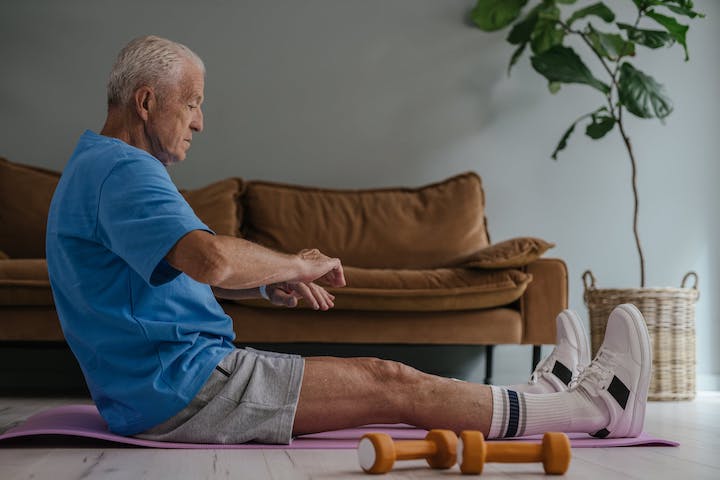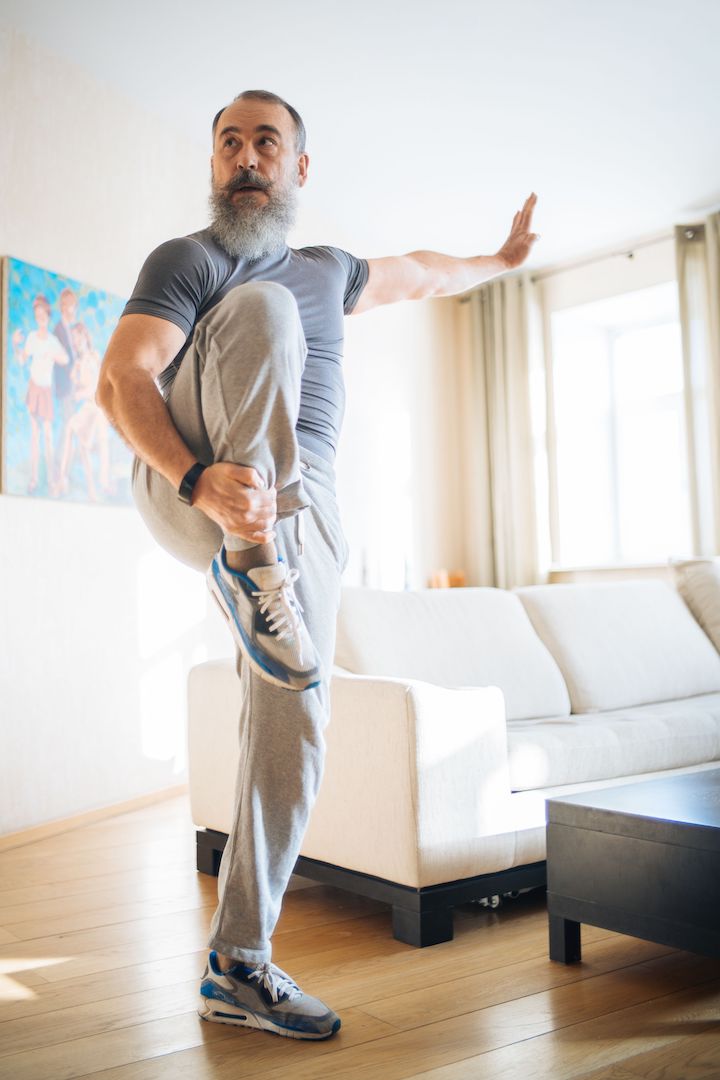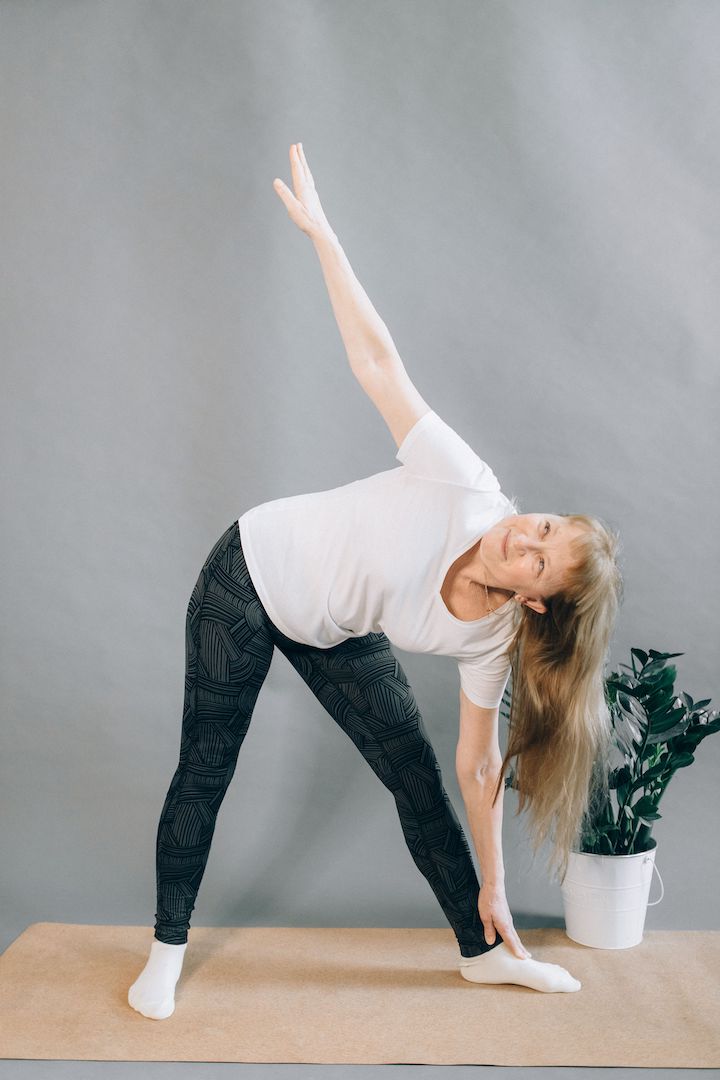

As you age, your body begins to slow down and your physical capabilities diminish. You may think that there’s nothing you can do about it, but that’s not true! Physical therapy plays an important role in geriatric care and can help seniors stay active and independent for longer.
Don’t let aging be a barrier to living life to the fullest – with physical therapy, seniors can remain healthy and continue doing the activities they love. In this article, we will explore the role of physical therapy in geriatric care: its benefits, types of therapies available, goals of treatment, common conditions treated, collaboration with other health professionals and caregivers’ roles.
We will also discuss the importance of physical therapy in the aging process. So don’t give up on getting stronger – join us as we delve into how you can use physical therapy to enhance your geriatric care!
With an emphasis on improving the overall quality of life, physical therapy plays a vital part in supporting the elderly in their pursuit of health and well-being. From developing personalized exercise routines to addressing any mental health concerns, physical therapists are uniquely positioned to help seniors maintain their independence and manage chronic conditions.
Through a combination of education, exercise programs, and manual therapy techniques, physical therapists create comprehensive plans tailored to each individual’s needs.
These plans may include exercises designed to improve range of motion, strength, and balance; advice on how to modify activities of daily living; development of posture awareness; instruction on adaptive equipment usage, as well as guidance for proper nutrition and lifestyle modifications.
Physical therapists also provide invaluable emotional support by helping seniors address psychological issues such as anxiety or depression that can be exacerbated due to age-related changes or other medical conditions.
By providing both physical and mental health care services, they ensure that the elderly have access to the necessary resources needed for healthy aging.
Thus, physical therapy is essential in geriatric care since it enables older adults to continue enjoying an active lifestyle with greater confidence.
When it comes to the benefits of physical therapy for geriatric care, there are many.
 Photo Credit: SHVETS production
Photo Credit: SHVETS production
Risk reduction of falls and injuries, relief from chronic pain, regaining mobility and strength, and improving balance and coordination—all can be improved through physical therapy. It’s important to note that each individual has their own unique needs when it comes to physical therapy; a personalized plan tailored specifically to the patient can help maximize its effectiveness.
And since regular exercise is so important in promoting healthy aging, physical therapy can provide seniors with an accessible way to stay active and independent. Learn more about how balance training can benefit not just the elderly, but everyone else as well.
You can help reduce the risk of falls and injuries in older adults by taking the right precautions. Exercise programs designed especially for seniors are an important part of reducing injury risk, as they help increase strength, flexibility, coordination, and balance.
These types of programs can also help improve overall mental health, which is often a factor when it comes to falls or other accidents. Incorporating mental health support into physical activity can ensure that your elderly loved one is getting the best possible care for both their physical and emotional well-being.
Regular exercise should always be accompanied by proper safety measures such as making sure that any walking aids used are in good condition and that there are no obstacles or tripping hazards in the area where your senior will be exercising.
It’s also important to recognize signs of fatigue or dizziness during physical activity, as these can be indicators that something isn’t quite right with the given geriatric care and should be addressed immediately.
Finally, make sure to consult with your elderly loved one’s doctor before starting any exercise program so that you know exactly what exercises are appropriate for them and what modifications may need to be made depending on their specific needs or medical history.
Chronic pain can be debilitating and frustrating, but relief is possible if you take the right steps.
Physical therapy can provide a comprehensive approach to reducing inflammation, managing fatigue, and easing chronic pain. It helps to reduce the impact of physical factors that may contribute to your chronic pain while also providing education on how to manage their symptoms.
 Photo Credit: Kampus Production
Photo Credit: Kampus Production
Physical therapists use various techniques such as massage, stretching, strengthening exercises, ultrasound therapy, and electrical stimulation to help relieve muscle tension and reduce inflammation. They also guide patients through lifestyle modifications such as proper posture, stress-reduction techniques, and relaxation strategies.
Additionally, physical therapists may recommend activities like yoga or Tai Chi for people with chronic pain in order to boost flexibility and promote overall well-being. With the right combination of these treatments, physical therapists can help those struggling with chronic pain find relief so they can live more comfortably.
Gaining back your mobility and strength isn’t just a dream – you can do it with the right support! Physical therapy is the perfect solution for those who want to regain their mobility and strength, as physical therapists are experts at creating personalized exercise regimens that focus on muscle strengthening.
For elderly individuals, physical therapy can be especially beneficial as it helps them stay active and independent. Physical therapists work with their patients to create an individualized program of stretching, flexibility exercises, balance activities, aerobic conditioning, weight training and other kinds of exercises designed to increase muscle strength and improve joint range of motion.
These programs are tailored specifically for each patient’s needs so they can get the most out of their treatment. With regular physical therapy sessions, seniors can not only regain their mobility but also stay healthy while doing so.
Slipping and falling can be a thing of the past with improved balance and coordination! Physical therapy is an effective way to help seniors achieve increased stability, agility, and overall safety.
Through exercise regimens, physical assessments, as well as advice on proper posture and techniques for geriatric care, a physical therapist can provide guidance for elderly individuals striving to maintain their mobility. Balance exercises such as standing on one foot or walking heel-to-toe are especially beneficial in helping seniors stay safe and increase their confidence when navigating through their environment.
 Photo Credit: Mikhail Nilov
Photo Credit: Mikhail Nilov
Additionally, strengthening exercises can help those with weak muscles improve their mobility while at the same time reducing their risk of injury. With personalized attention from a physical therapist, geriatric care patients will gain knowledge of how to perform the movements they need daily in order to stay independent longer.
Improved balance and coordination are possible with the aid of physical therapy; nothing should stand in the way of a senior’s desire for independence!
You could try different techniques to maintain your well-being as you age, such as stretching, strengthening, and balance exercises.
Physical therapy is an excellent resource when it comes to geriatric care. Depending on your specific needs, a physical therapist can help develop an exercise plan tailored for you. This may include adapting exercises or modifying equipment to make them more suitable for any mobility limitations you may have. With the guidance of a physical therapist, you can find ways to safely and effectively increase your strength and flexibility while also improving coordination and balance.
Physical therapists are trained to assess potential risks associated with aging that might not be visible at first glance. They will take into consideration factors like joint pain or muscle weakness in order to create a safe exercise program that works best for you and your lifestyle goals.
Furthermore, they will provide tips on proper posture and body mechanics along with guidance through daily activities so that you can stay independent as possible as you age.
Now that you’ve learned the different types of physical therapy, it’s time to look at how these therapies can benefit seniors.
Physical therapists strive to promote improved independence and enhanced quality of life for seniors through a variety of interventions tailored to an individual’s needs. They may use a combination of exercises, manual techniques, assistive devices, and education to accomplish these goals.
 Photo Credit: Nataliya Vaitkevich
Photo Credit: Nataliya Vaitkevich
Exercises are often used to improve mobility, strength, balance, coordination, posture, and flexibility so that seniors can safely perform daily activities such as walking or climbing stairs. Manual techniques may include massage or joint mobilization in order to reduce pain and stiffness while increasing the range of motion.
Assistive devices such as wheelchairs or walkers may also be provided when necessary in order to improve safety while increasing independence. Lastly, education is often provided on proper body mechanics in order to prevent injury and maximize function during daily activities.
These goals have been proven effective in improving the overall well-being of seniors by allowing them to remain independent longer while enjoying an increased quality of life.
By utilizing the expertise of a physical therapist, seniors can receive treatment for a range of common conditions such as osteoarthritis and incontinence, helping them to remain active and independent with ease.
Through geriatric rehabilitation and functional movement, physical therapists can create individualized programs that help seniors maximize their mobility and strength. This can be done through activities like balance exercises, weight-bearing activities, resistance training and stretching.
Physical therapy also helps improve coordination and reduce pain related to arthritis or other joint problems while also providing education on proper posture and body mechanics.
See how physiotherapy can help any arthritic patient in general.
Physical therapists may use splints or braces to increase stability in certain areas of the body while providing instruction on how to use assistive devices such as walkers or wheelchairs safely. These services are designed to help seniors remain independent at home or in an assisted living facility.
As you age, you may need to make some adaptations and modifications in order to keep living life to the fullest. Physical therapy plays an important role in helping seniors adapt their lifestyles according to their needs. To get started, consider the following within any geriatric care routine:
A physical therapist can provide guidance on how best to maintain mental resilience through social activities, hobbies, lifestyle changes, etc., tailored specifically for each senior’s individual needs.
Physical therapy is an invaluable tool when it comes to geriatric care because it provides specialized programs designed around each patient’s particular situation; whether they need help adapting their lifestyle, strengthening muscles or improving mental well-being, a qualified professional can work with them every step of the way towards achieving their goals safely and effectively!
Working together with other healthcare professionals is key to providing comprehensive care for seniors, and physical therapists have an important part to play. By utilizing interprofessional communication and collaborating with other health professionals such as doctors, nurses, occupational therapists, and dietitians, physical therapists are able to create tailored lifestyle modifications that will best fit the needs of elderly patients.
 Photo Credit: Studio Roman
Photo Credit: Studio Roman
This type of collaboration allows physical therapists to monitor their patient’s progress in different aspects of their lives while ensuring that any changes made are safe and effective. The role of physical therapy in geriatric care is invaluable since it provides a much-needed bridge between medical treatments and everyday activities.
Physical therapists can help seniors transition from hospital stays or rehabilitation centres back into their homes by providing functional assessments and exercises that focus on maintaining strength and mobility. This can be especially useful for those who suffer from chronic conditions or diseases such as arthritis or Parkinson’s disease which can greatly limit one’s ability to move around independently.
By working alongside other healthcare professionals, physical therapists aim to maximize the quality of life for elderly patients so they may lead a more fulfilling life even when faced with age-related limitations.
You have a crucial part to play in helping seniors maintain strength and mobility through physical therapy in geriatric care, so embrace the vital role of being a caregiver.
Communication between you and the senior is essential for determining the right course of care that fits their needs. As a caregiver, it’s important to listen to their preferences and understand any hesitations they may have about physical therapy.
Additionally, family involvement is also key to achieving positive outcomes; be sure to coordinate with other family members when discussing treatment plans.
It’s important for caregivers to provide support and understanding throughout their loved one’s rehabilitation process. Be prepared for challenges along the way as well as successes—it’s all part of what makes physical therapy such a rewarding experience for seniors!
Are you looking to stay active and manage your pain as you get older? Home-based physical therapy services could be the answer. Aging safely can be a challenge, but with the right resources, it doesn’t have to be!
Home-based physical therapy provides customized exercises that target areas of pain and stiffness in order to help improve mobility. With personalized attention from trained professionals, individuals can manage their pain while remaining independent in the comfort of their own homes.
Take advantage of this service today and see how home-based physical therapy could help keep you healthy and safe!
When it comes to physical therapy, there are risks associated with age-related changes and effective exercises. It’s important to consult with your doctor or a trained physical therapist before starting any physical therapy regimen.
A certified professional will be able to identify the best exercises for your body type and help you avoid any potential risks associated with physical therapy. Remember, taking care of yourself is one of the best ways to serve others in the long run.
You might be wondering how long your elderly loved one can expect to see results from physical therapy. Generally, it depends on the individual’s condition, but with a tailored exercise regimen and stretching techniques, most elderly patients begin to notice an improvement in their mobility within 4-6 weeks.
It’s important to stay consistent with the prescribed exercises, as this will help build strength and flexibility over time. With dedication and commitment to regular physical therapy sessions within geriatric care, you can expect your loved one to experience improved quality of life in no time!
As a caregiver, you can help ensure that your senior loved one is getting the physical therapy they need. Physical therapy gives seniors the opportunity to regain their independence and improve their quality of life.
Research shows that physical therapy can reduce falls in the elderly—a data point that illustrates how important it is for seniors to have access to proper care. Through regular physical therapy sessions, seniors can remain active and healthy throughout the aging process.
There are no results matching your search.
Reset